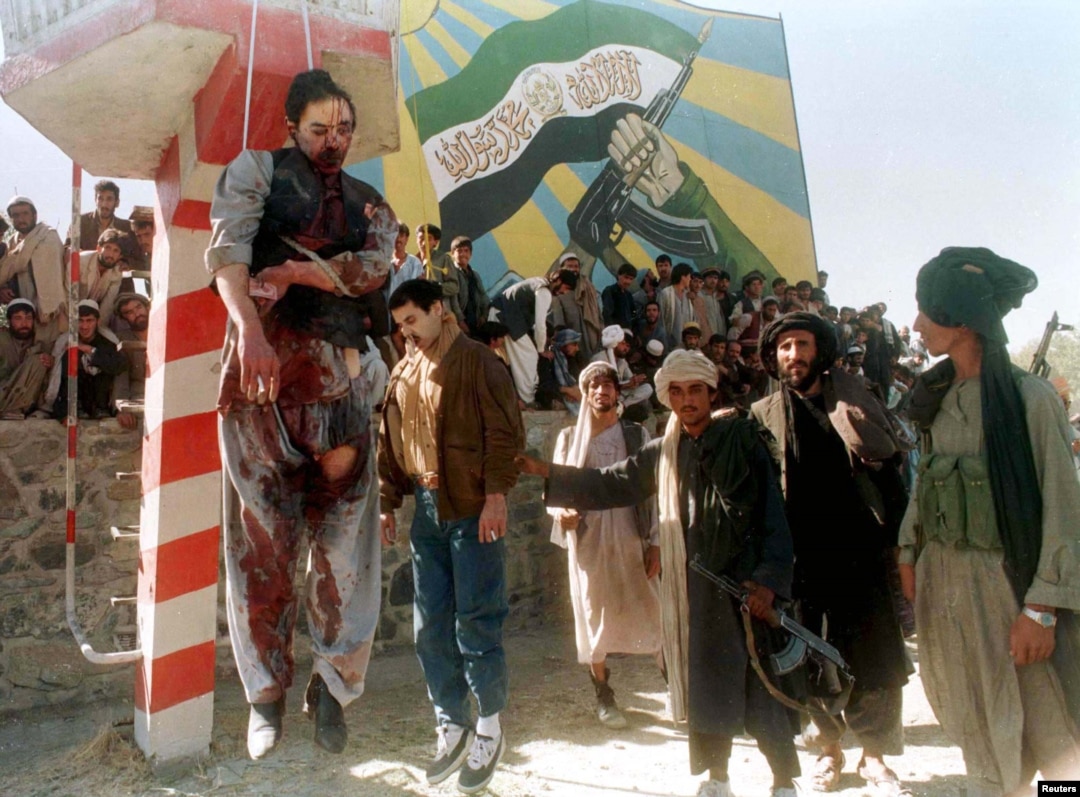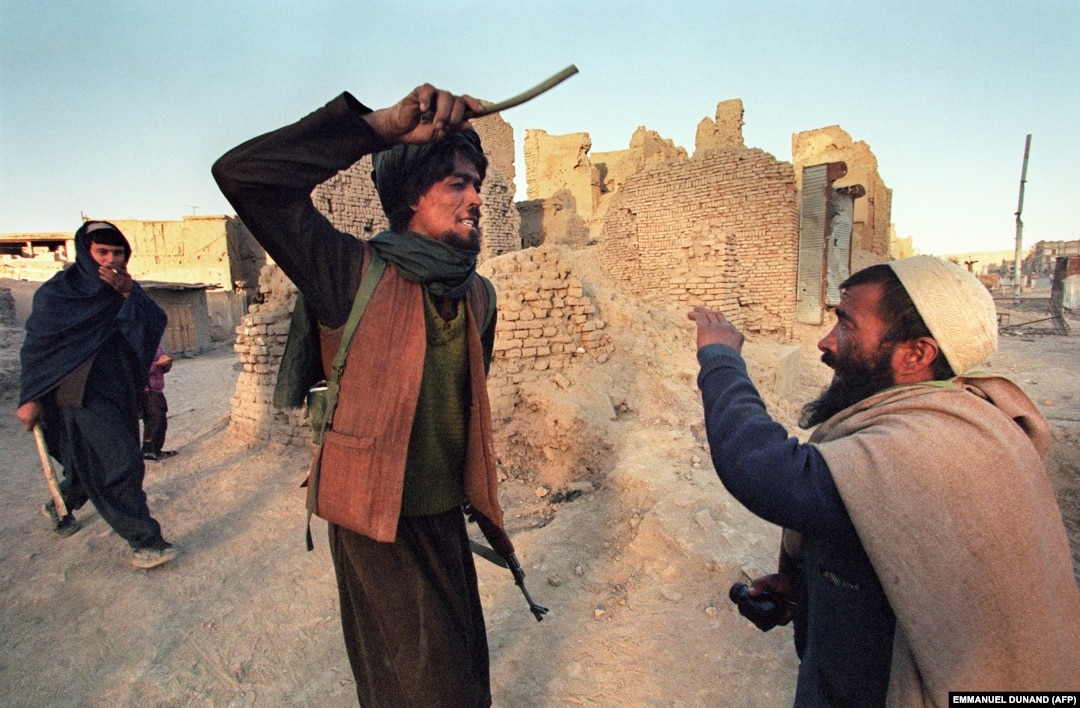Afghanistan Under The Taliban

Taliban fighters prepare to pray at Kabul's presidential palace, known as the Arg, in the autumn of 1996. In September, the Islamic militant group captured the city from mujahedin factions who had once fought against the Soviet invasion but by the 1990s were battling each other.

Afghanistan's Soviet-backed ex-president, Mohammed Najibullah (left), and his brother were strung up after being captured and killed inside a UN base in Kabul in September 1996. The gruesome display was the Taliban's first public act after seizing power in the capital.

A member of the Taliban beats a man caught with half a kilogram of opium. The hard-line Sunni group vowed to restore order and eradicate corruption in war-ravaged Afghanistan.

Men in northern Afghanistan hack up old Soviet shell cartridges to melt into household objects. Although open warfare stopped in most of the country after the Taliban seized control, the group's rigid enforcement of Islamic law and tribal traditions perpetuated the suffering of many ordinary Afghans.
A veiled woman riding a donkey with a young boy. Under Taliban rule, women were required to wear such clothing outside at all times, and could only leave their houses with a male relative.
Women in Kabul soon after the Taliban seized control of the capital. Women were also forbidden from working or getting an education -- beyond learning the Quran until the age of 8.
Taliban gunmen watching a football match in Kabul. Football was highly popular, especially after allegedly "un-Islamic" pastimes like kite flying and buzkashi were banned, but most sports faced restrictions.
Members of a Pakistan football team after having their heads shaved by the Taliban in punishment for competing in shorts during a match in Kabul. Footballers were required to cover their bodies while playing. Other sportsmen, like boxers, were forced to weave between the Taliban's strict rules and general sporting norms. When two Afghan boxers traveled to Pakistan for a tournament, judges demanded they shave their facial hair. Fearing the Taliban reaction, the men kept their beards and returned home without throwing a punch.
Music and movies were banned by the Taliban. This pole in Kabul is strung with tape stripped from destroyed cassettes.
A boy peers at frames from a movie reel he snatched from a bonfire after the Taliban publicly burned movie-screening materials.
Taliban enforcers pop beer cans under a Soviet tank in Kabul. Alcohol was also strictly forbidden. Punishments for offenders against the Taliban's Shari'a edicts were often gruesome, and public.
Shirin Khan executes a man who had reportedly killed Khan's son in the town of Khost after a decree handed down by a Shari'a court in 1998.
A young man who had his face painted black after reportedly being caught stealing five carpets. He was later "persecuted" by the Taliban.
A pair of hands strung from a lamppost as a warning against theft. Under the Taliban, those convicted of stealing could have their hands amputated.
A before-and-after view of a giant Buddha carved into the cliffs of Afghanistan's Bamiyan Province. The Taliban destroyed the 6th-century Buddhas with explosives in 2001. A Taliban minister cited the battle against idolatry, saying, "We are destroying the statues in accordance with Islamic law, and it is purely a religious issue."
But later, a Taliban minister claimed the destruction was an act of protest after a Western delegation offered money to protect the monument from nearby fighting without providing aid to children dying of malnutrition in the region.
Protesters in Kabul in 2001 tout their country's history of repelling occupation. Later that year, a U.S.-led coalition invaded the country after Taliban leaders refused to hand over Al-Qaeda leader Osama bin Laden in the wake of the September 11 attacks.
U.S. troops searching for Taliban fighters in mountains near Kandahar in 2003. After the U.S.-led invasion, most defeated Taliban melted away into mountains and villages or escaped into Pakistan.
A U.S. marine takes cover with Afghan civilians during a firefight with Taliban militants in 2010. The Taliban have been fighting a sputtering insurgency in Afghanistan since the foreign troops arrived.
A NATO armored vehicle after being hit by a suicide bombing in Jalalabad in 2014. Today, after nearly two decades of fighting, Taliban envoys are negotiating separately in at least two sets of talks -- one with U.S. officials and the other with Russian encouragement -- toward a controversial and potentially complex peace deal that could see U.S. troops withdraw from Afghanistan.

